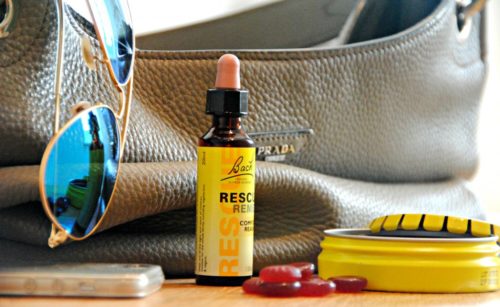Influencer marketing is basically like a celebrity endorsement but in a modern context using both old and new marketing tools. However, it is a step further than simple endorsement and successful campaigns always strive for collaboration between brands and influencers.
Influencers have large social media followings and need not necessarily be celebrities in the traditional sense. They can be anyone, anywhere with a large audience on social media. Fashion photographers on Instagram, tech bloggers, lifestyle Tweeps and even respected corporate personalities on LinkedIn all qualify as influencers. Every industry has influential people and they all have large followings on social media, which are your target audience.
Major Benefits
1.Access to Millennial and Gen Z consumers

85% of Gen Z use social media to learn about products etc…, while 40% of Millennials who watch YouTube believe that their favourite influencer understands them better than their own friends.
2.Custom Tailored for the Brand

Influencer marketing is fully customizable in terms of budget, number and types of influencer, content, frequency, scheduling, KPIs and more.
3.Actionable Insights & Data

Engagement and other KPIs such as click through rates, acquisitions, social sentiment etc… are easily accessible.
4.Immense Reach and Visibility

Aside from the alluring numbers, campaigns can reach thousands of consumers and helps bypass obstacles such as ad blockers and a general disdain for advertising.
5.Flexible Pricing

Unlike traditional endorsements, commercials and other forms of ads, influencer marketing is very flexible and accessible in terms of pricing structure and other factors allowing campaigns to be designed to fit a wide range of goals and budgets.
6.‘Shareablility’ across both Web & Social

Consumers are more likely to share influencer marketing content, expanding the reach of the campaign and it can go viral in ways that traditional ads can only dream of.
7.Versatility across popular Social Platforms

Many influencers are active on multiple social platforms. Depending on the influencer and the campaign, brands can be promoted across a variety of platforms such as Instagram, YouTube, Facebook, Snapchat and personal blogs, thus maximizing reach.
8.Audience and demographic targeting

Campaigns can be broad or targeted only at a niche to reach a desired audience. Working with influencers that specialize in a particular category of content such as travel or cooking can help reach an audience with specific interests.
Major Dos and Don’ts
Do | Don’t |
| Pick the right influencer for the brand, someone who can communicate your message to your TG. | Pick someone simply because they’re famous. |
| Set common goals and objectives and clearly communicate these to your influencer(s) so that goals are aligned. | Just hire and ignore them. |
| See that the content is genuine. Get your influencers to start with product testing. Subtlety and genuineness are the only way to go. | Let influencer content become like your other ads. |
| Let the influencer speak about your brand in their own voice. | Use your influencer to spread your content or script their content. |
| Check in weekly to see the progress of things. | Be overbearing. |
| Incentivize the influencer’s audience using discounts and promotions (using promo codes and such especially for followers of your influencer). | Create content, content and more content. |
| Offer influencers something to entice them; a gift, an experience to remember or even a monthly salary. | Get things done for free. |
| Have other campaigns to support influencers. | Rely solely on the influencer for buzz. |
Examples of Where & How Its Worked
Coca-Cola

Coke is probably one of the best examples of a great use of influencer marketing. They’ve been at it for more than a decade and the 2016 #ThatsGold campaign was one of their largest social influencer marketing campaigns.
The goal was to make sure that ‘gold moments’ from the torch-bearing ceremony to the last sprint of the Olympic games were shared so that no one was left out. To do this, Coca-Cola hired influencers 18 months in advance and being an Olympic Sponsor since 1928, they developed a year-long campaign divided into three phases, focusing activity on Facebook and Instagram.

The #That’sGold campaign kicked off a full year before the Rio Olympics and featured a 2 minute video with their mascot, a polar bear, who on the ‘road to Rio’ befriended many social media influencers and athletes. The video received 1.9 million views, 1400 comments and over 100,000 reactions on Facebook alone. A Brazilian Instagram account was set up for the bear called @oursoofficial to share media about the 2016 games and had 144,000 followers. They also followed the Torch-Tour relay in real-time.
The campaign was a resounding success on social media and all sorts of marketing features like Instagram Stories and Facebook Live were used. Pictures, posts, videos and other media from the campaign received millions of views and their accuracy rate of targeting teens was 88%. Their tie-ins with various athletes gave a tremendous push to their campaign.
Airbnb

Airbnb, now the famous hospitality service provider with more than 100 million stays, has to credit its tremendous growth to their influencer marketing strategy. They collaborated with some famous celebrity influencers to increase their reach and exposure. The campaign began in July 2015 when Mariah Carey became the first influencer to book her Malibu accommodation through Airbnb. With over 6 million followers on Instagram, Mariah Carey posted a picture taken at the luxurious beach house she stayed at in Malibu and booked through Airbnb and tagged them in the picture and the caption. The post received 45,000 likes.

A post by Lady Gaga saw Airbnb appear on the timelines of her 27 million followers on Instagram and in the last two years Airbnb’s engagement rate has been 4% due to 37 sponsored posts by various influencers, receiving 18 million likes and over 510,000 comments. The combined reach of the brand’s Instagram initiatives has been 966 million.
RESCUE

RESCUE is a North American brand of natural remedies. They used a clever influencer marketing strategy and gave away ‘buy one, get one free’ coupons through sponsored blog posts, in which bloggers shared their honest experiences using RESCUE’s line of natural stress relief products.
The campaign yielded impressive results including 133 million social media impressions and more than 6000 clicks to the coupon site. The brand saw a 258% percent increase in their Instagram following and also managed to be the #4 nationally trending topic on Twitter during the campaign.
Examples of where it hasn’t worked
Kim Kardashian’s Cure for Morning Sickness

A mistake or oversight by an influencer can become a big deal. While she was pregnant, Kim posted a photo of her holding a bottle of Diclegis which is a med for morning sickness. She failed to mention the post was sponsored and also neglected to mention the side effects and other warnings required on an ad for prescription medication. The FDA sent a letter that the post was in violation and demanded it be taken down. Both Kim and the brand lost some face in this influencer marketing blunder.
Chriselle Lim & Volvo

If the influencer and the brand aren’t a good fit, the campaign can easily flop. A brilliant example of this is the partnership between Chriselle Lim and Volvo. Lim is a fashion, beauty and lifestyle blogger known for her inspirational but authentic images. She put up a post promoting Volvo but it just didn’t feel right to her followers. Lacking her signature authenticity, the post quickly received negative comments and resulted in a backlash that caused Lim to have to edit her post. In this example, a simple incompatibility between influencer and brand resulted in both coming under fire.
And there you have it! Influencers are an amazing tool in the digital marketer’s arsenal and we have our own growing community of social influencers in Sri Lanka as well. When used correctly, Influencer marketing is a potent tool to reach out to your audience and make selling to them a more interactive and engaging exercise and ultimately a more positive one for the brand.

